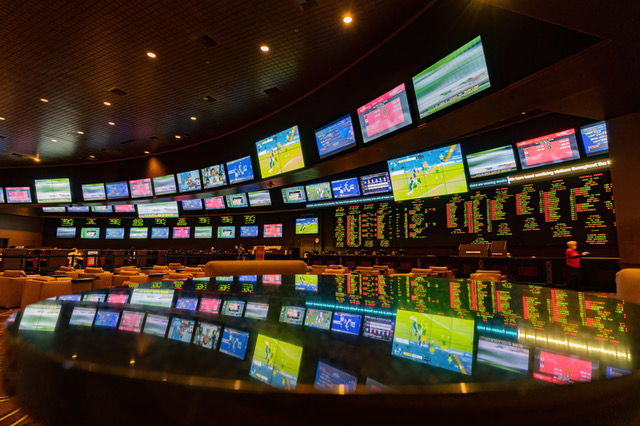
-
 Kenya's economy faces climate change risks: World Bank
Kenya's economy faces climate change risks: World Bank
-
Lessons and liquids: buried alive in Myanmar's earthquake

-
 Nintendo Switch 2 sparks excitement despite high price
Nintendo Switch 2 sparks excitement despite high price
-
Sri Lanka's crackdown on dogs for India PM's visit sparks protest

-
 China vows 'countermeasures' to sweeping new US tariffs
China vows 'countermeasures' to sweeping new US tariffs
-
Trump jolts allies, foes and markets with tariff blitz

-
 How Trump's 'liberation day' tariffs will impact China
How Trump's 'liberation day' tariffs will impact China
-
Europe hits out at Trump tariffs, keeps door open for talks

-
 Australia sweats through hottest 12 months on record: official data
Australia sweats through hottest 12 months on record: official data
-
South African artist champions hyenas in 'eco-queer' quest

-
 Taiwan says US tariffs 'highly unreasonable'
Taiwan says US tariffs 'highly unreasonable'
-
Trump escalates trade war with sweeping global tariffs

-
 China says opposes new US tariffs, vows 'countermeasures'
China says opposes new US tariffs, vows 'countermeasures'
-
Quake-hit Myanmar's junta chief to head to Bangkok summit

-
 New Spielberg, Nolan films teased at CinemaCon
New Spielberg, Nolan films teased at CinemaCon
-
Shiny and deadly, unexploded munitions a threat to Gaza children

-
 Stocks tank, havens rally as Trump tariffs fan trade war
Stocks tank, havens rally as Trump tariffs fan trade war
-
Financial markets tumble after Trump tariff announcement

-
 Europe riled, but plans cool-headed response to Trump's tariffs
Europe riled, but plans cool-headed response to Trump's tariffs
-
'Shenmue' voted most influential video game ever in UK poll

-
 Revealed: Why monkeys are better at yodelling than humans
Revealed: Why monkeys are better at yodelling than humans
-
Key details on Trump's market-shaking tariffs

-
 US business groups voice dismay at Trump's new tariffs
US business groups voice dismay at Trump's new tariffs
-
Trump sparks trade war with sweeping global tariffs

-
 US stocks end up, but volatility ahead after latest Trump tariffs
US stocks end up, but volatility ahead after latest Trump tariffs
-
Boeing chief reports progress to Senate panel after 'serious missteps'

-
 Is Musk's political career descending to Earth?
Is Musk's political career descending to Earth?
-
On Mexico-US border, Trump's 'Liberation Day' brings fears for future

-
 Tesla sales slump as pressure piles on Musk
Tesla sales slump as pressure piles on Musk
-
Amazon makes last-minute bid for TikTok: report

-
 Tesla first quarter sales sink amid anger over Musk politics
Tesla first quarter sales sink amid anger over Musk politics
-
World's tiniest pacemaker is smaller than grain of rice

-
 Nintendo says Switch 2 console to be launched on June 5
Nintendo says Switch 2 console to be launched on June 5
-
Certain foreign firms must 'self-certify' with Trump diversity rules: US embassies

-
 Nigerian president sacks board of state oil company
Nigerian president sacks board of state oil company
-
Heathrow 'warned about power supply' days before shutdown

-
 Epstein accuser Virginia Giuffre 'stable' after car crash
Epstein accuser Virginia Giuffre 'stable' after car crash
-
Swedish insurer drops $160 mn Tesla stake over labour rights

-
 Stock markets mixed as uncertainty rules ahead of Trump tariffs
Stock markets mixed as uncertainty rules ahead of Trump tariffs
-
Warner showcases 'Superman' reboot, new DiCaprio film

-
 Asian markets edge up but uncertainty rules ahead of Trump tariffs
Asian markets edge up but uncertainty rules ahead of Trump tariffs
-
UK imposes online entry permit on European visitors

-
 How a Brazilian chief is staving off Amazon destruction
How a Brazilian chief is staving off Amazon destruction
-
Brazil binman finds newborn baby on garbage route

-
 Trump set to unleash 'Liberation Day' tariffs
Trump set to unleash 'Liberation Day' tariffs
-
GM leads first quarter US auto sales as tariffs loom

-
 Trump 'perfecting' new tariffs as nervous world braces
Trump 'perfecting' new tariffs as nervous world braces
-
Trump puts world on edge as 'Liberation Day' tariffs loom

-
 UK vows £20 million to boost drone and 'flying taxi' services
UK vows £20 million to boost drone and 'flying taxi' services
-
Ford's US auto sales dip in first quarter as tariffs loom


NASA rolls out its mega Moon rocket -- here's what you need to know
NASA's massive new rocket is poised to make its first journey to a launchpad on Thursday ahead of a battery of tests that will clear it to blast off to the Moon this summer.
It will leave the Kennedy Space Center's Vehicle Assembly Building at 5:00 pm Eastern Time (2000 GMT) and begin its glacially slow, 11-hour crawl on a transporter to the hallowed Launch Complex 39B, four miles (6.5 kilometers) away.
Here's what you need to know.
- Huge rocket, huge cost -
With the Orion crew capsule fixed on top, the Space Launch System (SLS) Block 1 stands 322 feet (98 meters) high -- taller than the Statue of Liberty, but a little smaller than the 363 feet Saturn V rockets that powered the Apollo missions to the Moon.
Despite this, it will produce 8.8 million pounds of maximum thrust (39.1 Meganewtons), 15 percent more than the Saturn V, meaning it's expected to be the world's most powerful rocket at the time it begins operating.
"This is a flagship rocket you're about to see, it's a symbol of our country," Tom Whitmeyer, associate administrator for exploration systems development, told reporters on a call this week.
A symbol that comes at an estimated price tag of $4.1 billion per launch for the first four Artemis missions, NASA Inspector General Paul Martin told Congress this month.
Once it reaches the iconic launch pad, where 53 Space Shuttles took off, engineers have roughly two more weeks worth of checks before what's known as the "wet dress rehearsal," the final prelaunch test.
On the morning of April 3, the SLS team will load more than 700,000 gallons (3.2 million liters) of cryogenic propellants into the rocket and practice every phase of launch countdown, cutting off the engines less than ten seconds from blast off.
The propellant will then be drained to demonstrate safely standing down a launch attempt.
- To the Moon and beyond -
NASA is targeting May as the earliest window for Artemis-1, an uncrewed lunar mission that will be the first flight for SLS and Orion.
SLS will first place Orion into a low Earth orbit, then, using its upper stage, perform what's called a trans-lunar injection.
This maneuver is necessary to send Orion 280,000 miles beyond Earth and 40,000 miles beyond the Moon -- further than any spaceship capable of carrying humans has ventured.
On its three-week mission, Orion will deploy 10 shoebox size satellites known as CubeSats to gather information on the deep space environment.
It will journey around the far side of the Moon -- thanks to thrusters provided by the European Space Agency (ESA) service module -- and finally make its way back to Earth, where its heat shield will be tested against the atmosphere.
Splashdown takes place in the Pacific, off the coast of California.
Artemis-2 will be the first crewed test, flying around the Moon but not landing, while Artemis-3, now planned for no earlier than 2025, will see the first woman and first person of color touch down on the lunar south pole.
NASA wants to use the Moon as a proving ground for testing technologies necessary for a Mars mission, sometime in the 2030s, using a Block 2 evolution of the SLS.
- SLS v Starship -
NASA calls SLS a "super heavy lift exploration class vehicle." The only currently operational super heavy rocket is SpaceX's Falcon Heavy, which is smaller.
Elon Musk's company is also developing its own deep space rocket, the fully reusable Starship, which he has said should be ready for an orbital test this year.
Starship would be both bigger and more powerful than SLS: 394 feet tall with 17 million pounds of thrust. It could also be considerably cheaper.
The tycoon has suggested that within years, the cost per launch could be as little as $10 million.
Direct comparisons are complicated by the fact that while SLS is designed to fly direct to its destinations, SpaceX foresees putting a Starship into orbit, then refueling it with another Starship so it can continue its journey, to extend range and payload.
NASA has also contracted a version of Starship as a lunar descent vehicle for Artemis.
M.García--CPN
